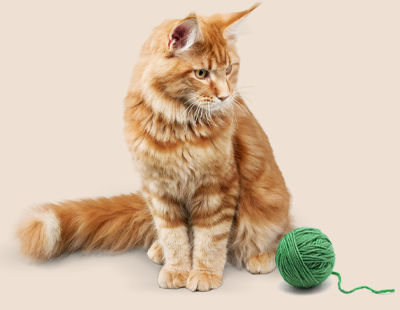Ask a vet: what is antimicrobial resistance?
What is antimicrobial resistance and how does it affect us and our pets?
Since we started over 20 years ago, Verm-X has been working to combat the growing problem of anthelmintic resistance. ‘Anthelmintic resistance’ or ‘wormer resistance,’ as it is more commonly known, refers to parasites that have evolved to be no longer affected by pharmaceutical wormers.
Antimicrobial resistance
Holistic vet, Nick Thompson MRCVS explores the history of antibiotics and the problem of resistance.
I've been in veterinary medicine for over 30 years. During that time the enormity of parasitic worm resistance to anthelmintics has come to the fore. It strikes me that most of us are ignoring gut worm resistance to drugs.
The problem, put simply, is that all human and animal de-wormers face rapidly developing resistance.
A quick toolkit of terminology
A helminth worm is a parasitic worm.
An anthelmintic is a de-wormer drug.
Bacteria are single cell micro-organisms.
Antibiotic/antimicrobial drugs are used to treat bacterial infections.
Antimicrobial resistance is the ability to withstand the killing/paralysing effects of a drug that would normally kill or inhibit that organism.

What does antimicrobial resistance really mean?
Let's look at antibiotic resistance. It's the same story as anthelminthic resistance, only better known. Take an average human and an average horse. They both have a normal mixed population of mostly killable susceptible bacteria, but also have a few resistant un-killable bacteria to any given antibiotic.
If we give them a course of antibiotics what happens? All susceptible bacteria are killed. Or course, by definition. But equally by definition, bugs resistant to antibiotics are unaffected. Unaffected bugs do two things. They proliferate and they can pass on those resistant genes to the next generation.
Causes of antimicrobial resistance
Back to our average human and our average horse to tell the story of anthelminthic resistance. Both infected human and animal have a mixed population of mainly susceptible worms with a very few resistant worms or helminths this time.
We give a dose of anthelminthic de-wormer and what happens? Those worms that can be eliminated are eliminated but those tiny few resistant worms do two things. They remain and they flourish over time to pass on their genes.
Within all populations of bacteria in your gut; both human and animal, there will be some resistant to antibiotics.

Antimicrobial resistance vs antibiotic resistance, a quick history of antibiotics
Let’s look at the history of antibiotics as a model of runaway resistance problems to help us understand what could happen with anthelminthic resistance, starting in 1928 with Fleming’s Penicillin. This, the first and most famous antibiotic met with resistance in 1941 after just 13 years.
Every few years since then a new antibiotic has been discovered and within a decade or two resistance struck. Always. With every new antibiotic since, antibiotic resistance in inevitable. We know this from almost 90 years of experience with antibiotics.
Antibiotic resistance has been described by the World Health Organisation, WHO, as the single greatest challenge in infectious diseases today. This is serious stuff but how do these dramatic predictions help us understand anthelmintic resistance?
Every single pharmaceutical de-wormer used today has resistance issues with the worms they are trying to tackle.
Dave Rendle, equine internal medicine specialist, speaking at the 2020 Equine forum earlier this year, warned of an ‘Armageddon’ of wormer resistance;”
“The more we worm, the more resistance we get….We’ve still got that resistance as it doesn’t go away, but for the first time, we don’t have any more classes of drug to turn to.”
“We’re on a slippery slope, and what’s at the bottom is not an appealing picture. There are difficult questions ahead but we need to think smart, embrace diagnostics and start educating people, or we’ll find ourselves back in the 1950s with reduced stock capacity – and more and more horses dying of colic.”
Herbs: naturally effective
I’ve been looking, for the last decade or so, at the use of herbs with anthelmintic properties. The average herb has within it between 400 - 600 active molecules. It acts in hundreds of ways.
Resistance is impossible as the complexity of the herb's chemistry makes it impossible for the worms to outmanoeuvre. It seems ludicrous that we've side-stepped nature and ignored thousands of years-worth of experience and what’s actually worked.
It’s a case of wanting something in a box over something growing naturally in the wild. We have to look at the alternatives. With the climate crisis at the moment, we are similarly in crisis with pharmaceuticals.
They’re running in parallel, a crisis externally and a crisis within - all seems to be pointing back to a natural order and a balance.
Interested to learn more from Dr Nick?
Ask a Vet: Why Do Dogs Eat Grass?
Ask a Vet: What Makes Dogs Itch?
Ask a Vet: Can Puppies Eat Raw Bones?

